
views
X
Research source
Choosing a Jump Rope
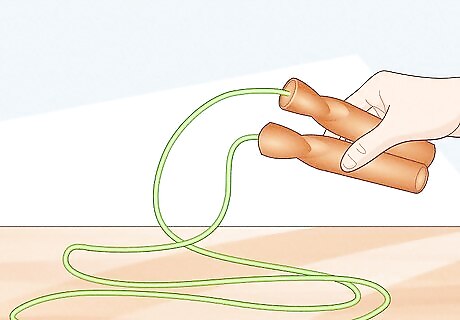
Decide what kind of rope you want to buy. The type of rope you purchase will depend on your experience/fitness level and how you plan to use your jump rope. If you are a beginner jumper, then you may want to choose a cloth or beaded jump rope. These types of jump ropes turn more slowly and offer more control than PVC ropes, so they are a good choice for mastering form when you are just starting out. If you are an intermediate/fitness jumper, then you may want to choose a leather or PVC jump rope. These types of jump ropes are lightweight and they can move quickly for speed training. If you are an experienced/speed jumper, then you may want to choose a speed rope. Speed ropes are made of lightweight PVC and some speed ropes have ball bearings attached to the rope ends that help your rope turn even more quickly.
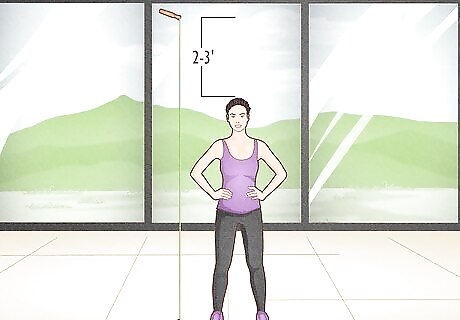
Select the right length. You will need to buy a rope that is about 2-3 feet longer than your height. If you have trouble deciding between two lengths, go for the longer one. You are better off buying a rope that is too long than one that is too short. Remember that you can always reduce the length but you cannot add to it.

Ask for help. If you go to a sporting goods store, you can always ask one of the associates to help you with your purchase. They may even be able to size your jump rope for you in the store.
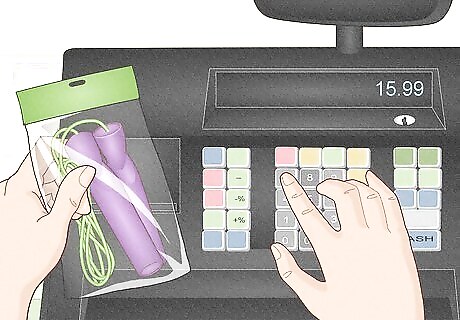
Buy your rope! Once you have decided on a rope type and size, purchase your jump rope. Depending on the type of rope you have decided to purchase, you may be able to pick one up at a local bargain store or you may have to go to a specialty sporting goods store.
Sizing a Jump Rope
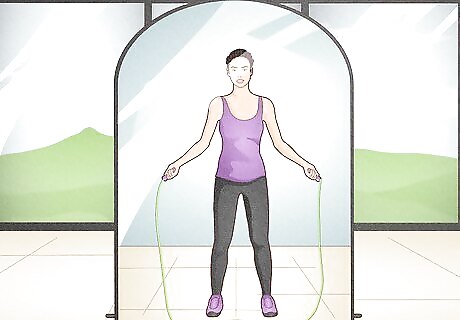
Stand in front of a mirror with your jump rope. You do not need to be able to see your whole body, just the upper half. Hold both jump rope handles in one hand and use your other hand to unwind your jump rope and straighten it out completely so that it touches the ground.
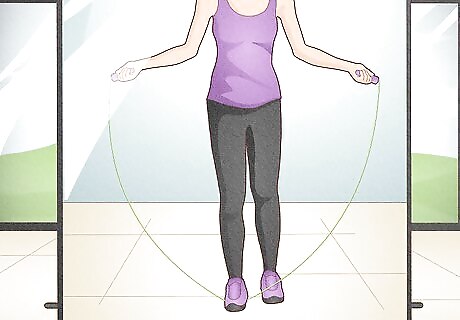
Step on your jump rope with one foot. Make sure that your foot is on the center of your jump rope. Pull on your rope handles and check the alignment of your handles to see if they are even. If they are not even, lift up your foot slightly and adjust the rope until your handles are even. Hold up both jump rope handles as high as they will go. Both handles should be vertical and the rope should be taut.
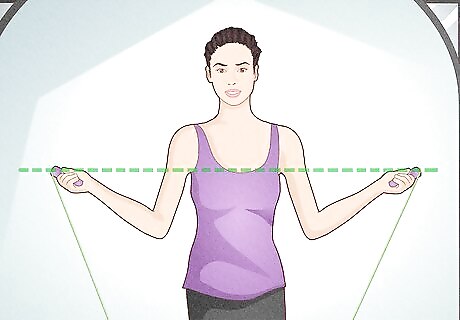
Check the location of your handles in the mirror. Look and see where the tops of your handles align with your body. If the rope is above your shoulder line, then it is too long and you will need to adjust it. For beginners, the tops of your rope handles should be just below your shoulder line but above your armpit. This length is ideal for kids and beginners because it will swing around more slowly than a shorter rope. For fitness jumpers, the tops of your rope handles should be aligned with your armpit. This length is ideal for fitness jumpers because your rope will move quickly and it will be easier to control than the longer length. This length is also ideal for doing double unders, which is known as one of the most difficult CrossFit moves. Double unders are easier if your rope is well-sized For experienced speed jumpers, the tops of your rope handles should be an inch or two below your armpits.This length is ideal for speed jumpers because your rope will move quickly with less effort and it will be easier to control.

Take note of how much length will need to be removed. If you have a ruler handy and you want to be extremely precise, you can measure the distance from the tops of your handles to their ideal placement. Otherwise, you can just eyeball it.
Adjusting a Jump Rope with Knots
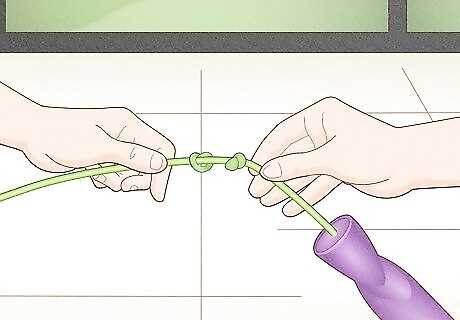
Adjust the length of your rope. If your jump rope is too long, you will need to adjust the length. There are a couple of different ways to adjust the length of your jump rope. The easiest way to adjust your jump rope’s size is by tying a knot or a couple of knots in the rope. Tie the knot as close to the handle as you can without letting the knot actually touch the handle. If you need more than one knot to adjust the size, tie one knot (or two) on each side of the rope. This method is best for beaded and cloth ropes.

Test your rope size. Make sure that you have enough space to jump rope and that you can see the topmost part of your jump rope as it swings over your head. If you can jump rope in front of a large mirror, that is ideal. If not, ask a friend to watch you. As you jump rope, notice the distance between the top of your head and the middle of your rope. For beginner jumpers, this distance should be about 16-30 inches. For fitness jumpers, this distance should be about 6-10 inches. For speed jumpers, this distance should be about 2-6 inches. Speed and control
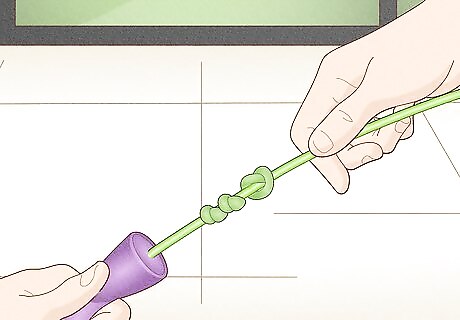
Readjust your jump rope as needed. If your jump rope seems too long or too short, you can always readjust it by adding or taking out one of the knots that you made.
Adjusting a Jump Rope by Cutting off Excess Rope
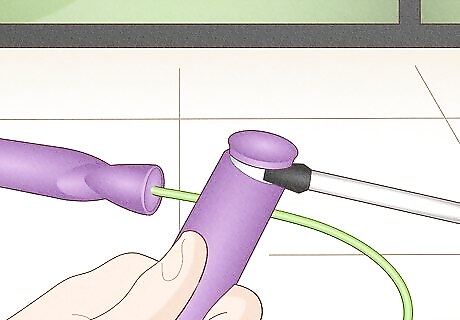
Remove handle cap. Not all jump ropes have handle caps, but if your jump rope has a handle cap, you will need to remove it before proceeding. Follow the product instructions for how to remove the handle cap.
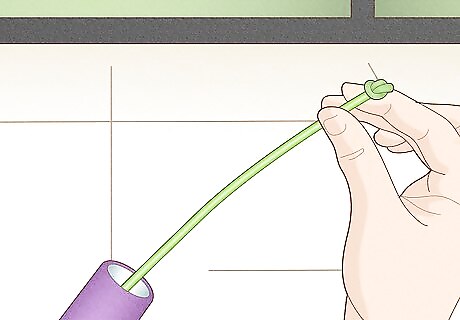
Pull excess rope through handle. Pull enough rope through the handle to cut rope to the desired length. Measure this length twice before cutting it off. Leave a few extra inches if you will be knotting the end of the rope after you cut it. If you will be crimping the end of the rope with a clamp that was included with your jump rope, then you can leave a little less length. But it is a good idea to err on the side of caution and leave yourself a few extra inches just in case.
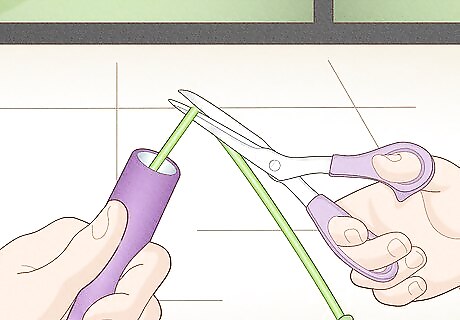
Cut off excess rope. Step on the middle of the rope and hold the other end to make the rope slightly taut, then make the cut. Do not stretch the rope beyond it's normal length before you make the cut, just make sure that it is straight when you cut it.
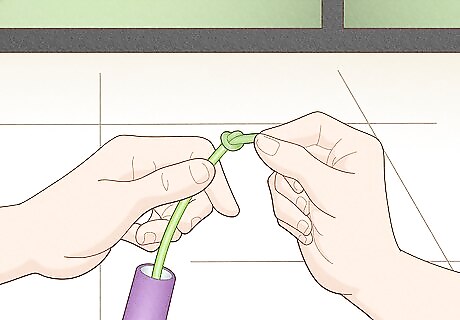
Knot or crimp the end of your rope. With the end of your rope still pulled through the jump rope handle, tie a knot in the rope or use the crimp that was included with your jump rope to secure the end of your rope. Follow the product instructions for removing the crimp from the severed rope and replacing it on the resized rope. EXPERT TIP "Once you've cut the rope, it can help to lightly burn the end with a lighter, so that it doesn't fray everywhere." Halle Payne Halle Payne Competitive Jump Roper Halle Payne has been jumping rope for over 5 years. She was one of the earliest members of Stanford Jump Rope and has performed in dozens of events across the United States, including the Jump Rope Collegiate Championships in 2018. Halle Payne Halle PayneCompetitive Jump Roper
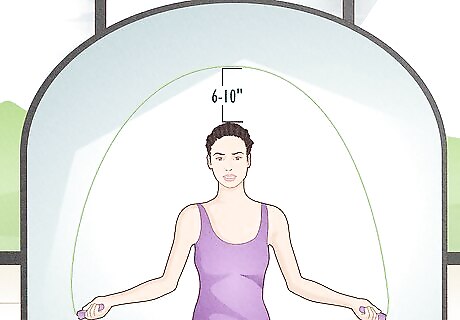
Test your rope size. Make sure that you have enough space to jump rope and that you can see the topmost part of your jump rope as it swings over your head. If you can jump rope in front of a large mirror, that is ideal. If not, ask a friend to watch you. As you jump rope, notice the distance between the top of your head and the middle of your rope. For beginner jumpers, this distance should be about 16-30 inches. For fitness jumpers, this distance should be about 6-10 inches. For speed jumpers, this distance should be about 2-6 inches. Speed and control
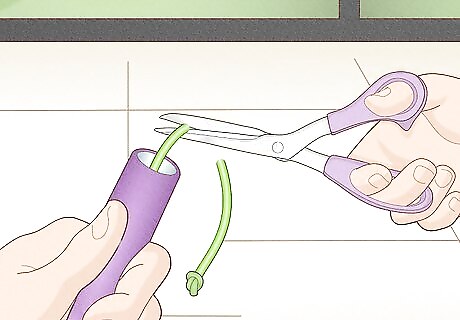
Readjust your jump rope as needed. If your jump rope still seems too long, readjust it by removing another inch or two off the end and knotting or crimping the end.



















Comments
0 comment